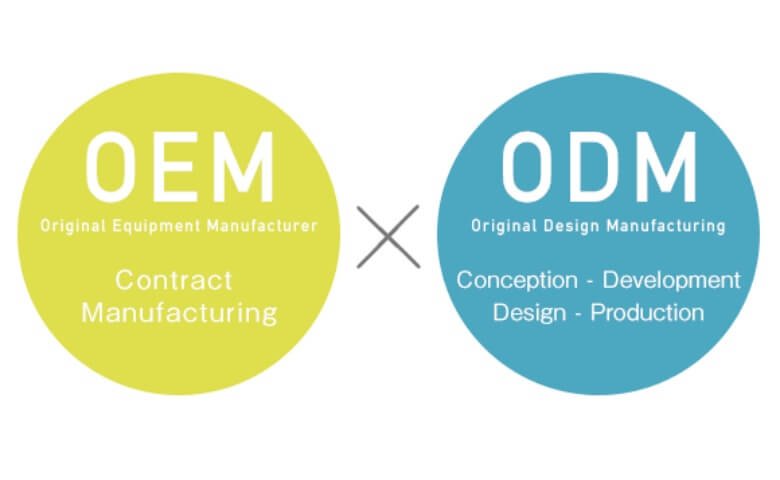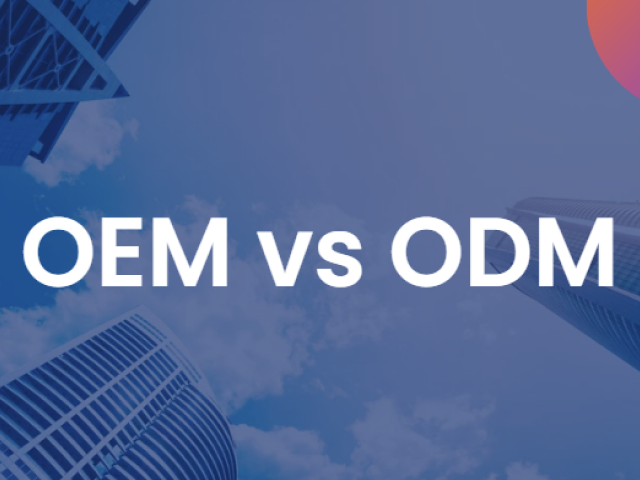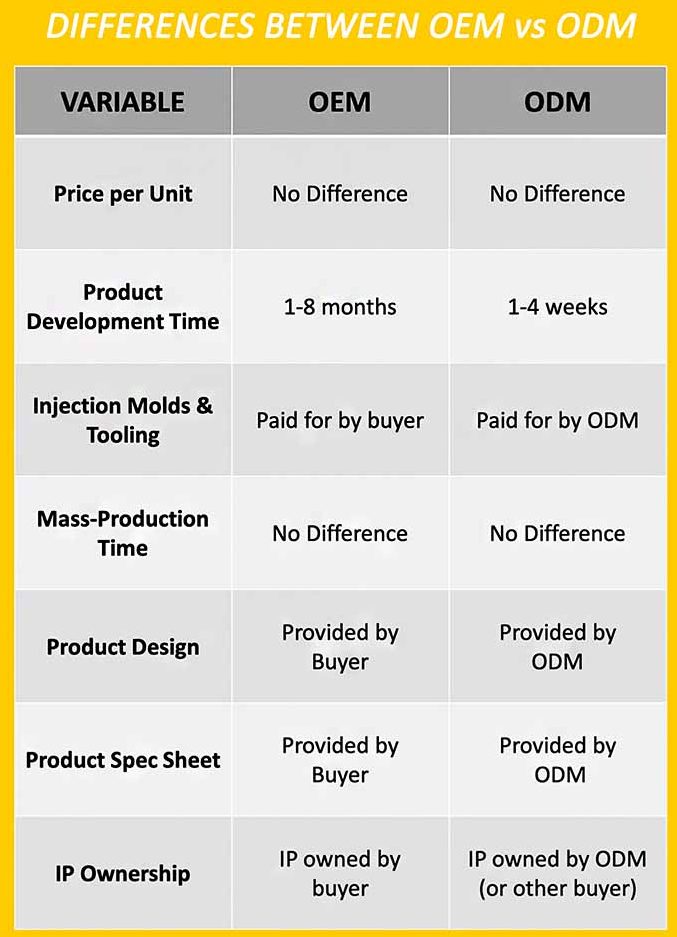Deciding between OEM and ODM manufacturing is a critical choice for bag brands. OEM offers full design control, while ODM provides ready-made, faster-to-market solutions.

Table of Contents
- What is OEM (Original Equipment Manufacturer) in Bag Manufacturing?
- What is ODM (Original Design Manufacturer) in Bag Manufacturing?
- Key Differences: A Head-to-Head Comparison of OEM and ODM
- Which Model is Right for Your Bag Brand?
- Best Practices for Partnering with a Bag Manufacturer
- Partnering with Beldtura Leather for Your Manufacturing Needs
- Frequently Asked Questions about OEM and ODM
What is OEM (Original Equipment Manufacturer) in Bag Manufacturing?
Original Equipment Manufacturer (OEM) is a manufacturing model where a company, like Beldtura Leather, produces bags and accessories based on a design, set of specifications, and technical package provided entirely by the client brand. In this arrangement, you are the architect of your product. You retain full creative control and ownership of the design and intellectual property (IP). The manufacturer’s role is to be your production expert, bringing your unique vision to life with precision and quality craftsmanship.

This model is ideal for brands that have a distinct design identity and want to create a product that is 100% unique in the market. It requires a significant investment in research, design, and development from the brand’s side, but the result is a truly bespoke product that no one else can replicate.

The OEM Process Explained
The OEM journey is a collaborative but brand-led process. It typically begins with the brand submitting a detailed tech pack. This crucial document includes technical drawings, material specifications (e.g., type of leather, hardware finish, lining fabric), color codes, dimensions, and construction details. The manufacturer then uses this blueprint to create initial prototypes or samples. After a feedback and revision cycle to perfect the sample, mass production begins once the brand gives final approval.
Pros of Choosing an OEM Partner
-
Complete Creative Control: Your brand dictates every single detail, from the stitching style to the zipper pull. This ensures the final product perfectly aligns with your brand’s aesthetic and vision.
-
Intellectual Property Ownership: The design belongs to you. This exclusivity is a powerful competitive advantage, preventing other brands from selling an identical product.
-
Unique Brand Identity: OEM allows you to build a strong, recognizable brand identity through one-of-a-kind products. This is essential for long-term brand equity and customer loyalty.
-
Quality Assurance: You specify the quality standards for materials and construction, giving you direct control over the perceived value and durability of your bags.
Cons of the OEM Approach
-
Higher Development Costs: The process of designing, developing, and creating molds or patterns from scratch involves higher upfront costs and investment in R&D.
-
Longer Time-to-Market: The detailed design, sampling, and revision phases mean that the timeline from concept to finished product is significantly longer than with ODM.
-
Requires Design Expertise: Brands must have in-house design capabilities or hire freelance designers to create the comprehensive tech packs required by the manufacturer.
What is ODM (Original Design Manufacturer) in Bag Manufacturing?
Original Design Manufacturer (ODM), often referred to as private label or white label, is a model where the manufacturing company provides existing, market-tested bag designs. The client brand can then select from this catalog of pre-developed products and add its own branding, such as logos, tags, and custom packaging. Some manufacturers may also offer minor modifications, like changing colors, materials, or hardware on an existing design.
This approach is perfect for brands that want to get to market quickly, test a new product category, or lack the resources for a full in-house design team. You leverage the manufacturer’s design expertise and production-ready templates to launch your collection efficiently.
The ODM Process Explained
The ODM process is far more streamlined. A brand reviews the manufacturer’s catalog of available bag styles. Once a design (or multiple designs) is selected, the brand specifies its branding requirements and any minor customizations. The manufacturer then produces a sample with the brand’s logo for approval. Because the core design, patterns, and tooling already exist, the process moves directly from selection to branded sampling and then to mass production, drastically reducing the overall timeline.
Pros of Choosing an ODM Supplier
-
Speed to Market: With pre-existing designs and tooling, the production timeline is significantly shorter. This allows brands to capitalize on trends quickly.
-
Lower Development Costs: Since you are not investing in design and development from scratch, the upfront costs are substantially lower.
-
Reduced Design Burden: No need for an in-house design team or extensive technical knowledge. You rely on the manufacturer’s proven designs.
-
Lower Minimum Order Quantities (MOQs): Manufacturers can often offer lower MOQs for ODM products since they produce these designs for multiple clients.
Cons of the ODM Approach
-
Lack of Uniqueness: The bag design is not exclusive to your brand. Other companies may be selling a very similar or identical product under a different label.
-
Limited Customization: You are generally limited to cosmetic changes like logos, colors, and materials. Major structural or functional modifications are typically not possible.
-
No IP Ownership: The intellectual property of the design remains with the manufacturer. You are essentially licensing the design for your brand.
Key Differences: A Head-to-Head Comparison of OEM and ODM
Understanding the fundamental distinctions between these two models is key to making the right strategic decision for your business. The choice impacts everything from your budget and timeline to your brand’s position in the marketplace.
| Feature | OEM (Original Equipment Manufacturer) | ODM (Original Design Manufacturer) |
|---|---|---|
| Design Concept | Provided by the client brand. | Provided by the manufacturer. |
| Intellectual Property | Owned by the client brand. | Owned by the manufacturer. |
| Customization Level | Total. Every detail is defined by the brand. | Limited. Primarily branding, colors, and materials. |
| Upfront Investment | High (R&D, tooling, sampling). | Low (no design and development costs). |
| Time to Market | Longer (due to design and development phases). | Faster (uses pre-existing designs). |
| Best For | Established brands with strong design identity or startups seeking market differentiation. | New brands, companies entering a new market, or those prioritizing speed and low cost. |
Which Model is Right for Your Bag Brand?
The best manufacturing path depends entirely on your brand’s goals, resources, and market strategy. There is no universally “better” option; there is only the option that is better for you.
When to Choose OEM for Your Collection
Opt for an OEM partnership if your brand fits one or more of these criteria:
-
You have a unique, innovative design. If your core value proposition is a novel design, functional feature, or signature aesthetic, OEM is the only way to protect it.
-
Brand differentiation is your top priority. You are building a high-end or niche brand where product exclusivity is critical to your market positioning and pricing strategy.
-
You have the resources for R&D. Your budget and timeline can accommodate the costs and longer lead times associated with creating a product from the ground up.
When to Choose ODM for Your Product Line
An ODM partnership is the more strategic choice in these scenarios:
-
Speed is of the essence. You need to launch a collection quickly to respond to a market trend or a specific sales season.
-
You are testing the market. If you are a new brand or are expanding into bags for the first time, ODM offers a low-risk way to validate your concept before investing heavily in unique designs.
-
Your focus is on marketing and sales. If your brand’s strength lies in building a community and marketing expertise rather than product design, ODM allows you to focus on what you do best.
Best Practices for Partnering with a Bag Manufacturer
Regardless of whether you choose OEM or ODM, a successful partnership hinges on clear communication and a shared commitment to quality. Following these best practices will help ensure a smooth production process and a high-quality final product.
Vetting Your Manufacturing Partner
Thoroughly research potential partners. Look for a manufacturer with demonstrated experience in your desired materials, such as genuine leather or vegan alternatives. Ask for a portfolio of their past work, inquire about their quality control processes, and understand their production capacity. A transparent and communicative partner is invaluable.
Crafting a Detailed Tech Pack (For OEM)
For an OEM project, your tech pack is the single most important document. It must be exhaustive. A vague tech pack leads to misinterpretations, incorrect samples, and costly delays. Include high-resolution drawings from multiple angles, precise measurements, material Pantone codes, hardware specifications, and detailed notes on construction. The more detail you provide, the closer the first sample will be to your vision.
Clarifying Intellectual Property Rights
Put everything in writing. For OEM, your contract should clearly state that you retain 100% ownership of the design’s intellectual property. For ODM, the agreement should specify the terms of use for the design and your branding. Clear legal agreements protect both parties and prevent future disputes.
Partnering with Beldtura Leather for Your Manufacturing Needs
Choosing the right manufacturing partner is as crucial as choosing the right model. At Beldtura Leather, we excel in both OEM and ODM services, providing flexible solutions tailored to the unique needs of each brand we work with. Our decades of experience in leather craftsmanship allow us to execute complex OEM designs with meticulous attention to detail, transforming your vision into a tangible, high-quality product.
For brands seeking speed and efficiency, our curated collection of ODM designs offers a range of timeless and contemporary styles ready for your private label. We guide our partners through every step, from material sourcing and sampling to full-scale production and quality assurance, ensuring a seamless and transparent process. Whether you are a startup launching your first collection or an established brand scaling your operations, our expertise is your asset.
Frequently Asked Questions about OEM and ODM
What is the main difference between OEM and ODM?
The primary difference lies in design ownership. In OEM, the brand designs the product, and the manufacturer builds it. In ODM, the manufacturer designs the product, and the brand puts its label on it.
Is OEM more expensive than ODM?
Initially, yes. OEM involves higher upfront costs for research, design, development, and tooling. However, it can lead to higher profit margins in the long run due to product exclusivity. ODM has lower upfront costs but may face more price competition.
Can I customize an ODM bag?
Customization in ODM is typically limited to branding, colors, materials, and sometimes hardware. Significant changes to the bag’s structure, shape, or core features are not usually possible, as that would require creating new patterns and molds, effectively turning it into an OEM project.
Which model is better for a new startup?
It depends on the startup’s mission. If the startup is founded on a unique product idea, OEM is necessary. If the startup’s goal is to build a brand through marketing and wants to enter the market quickly with minimal risk, ODM is often the more practical choice.



